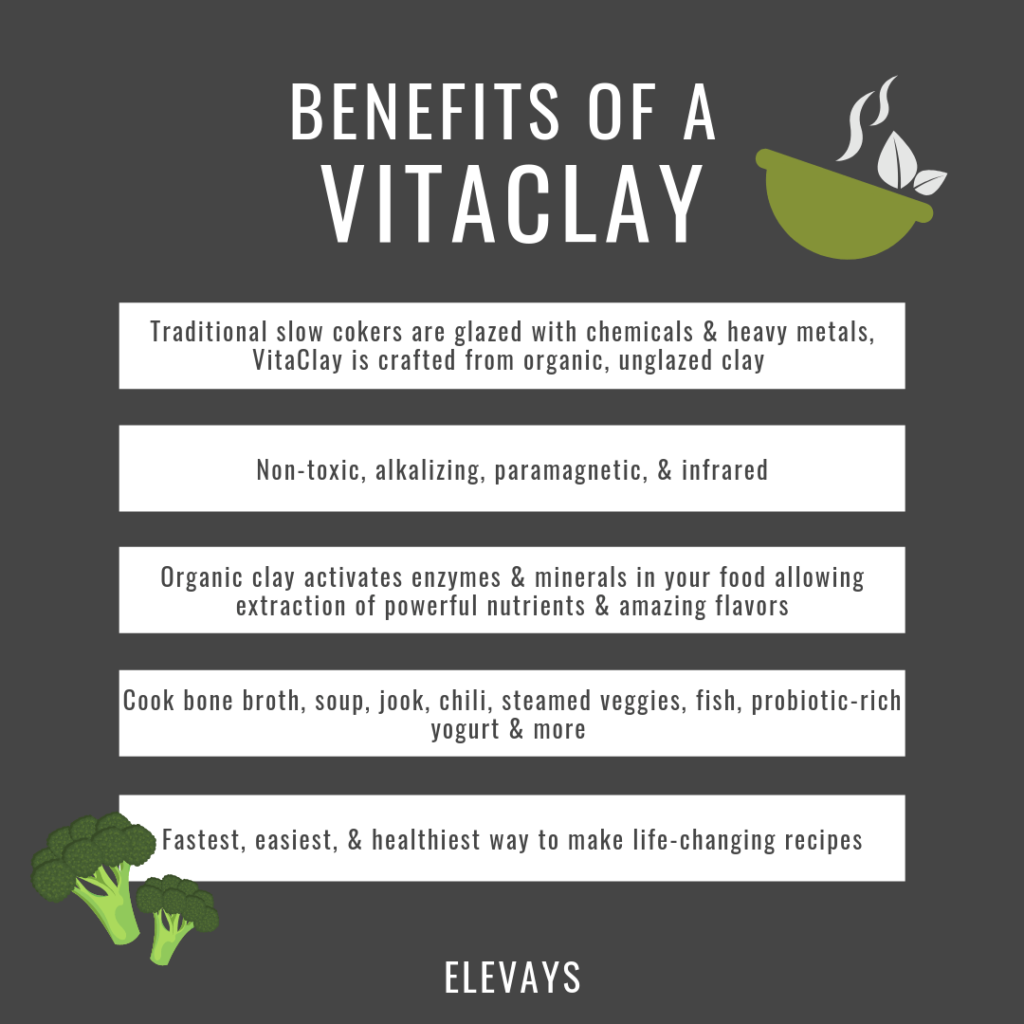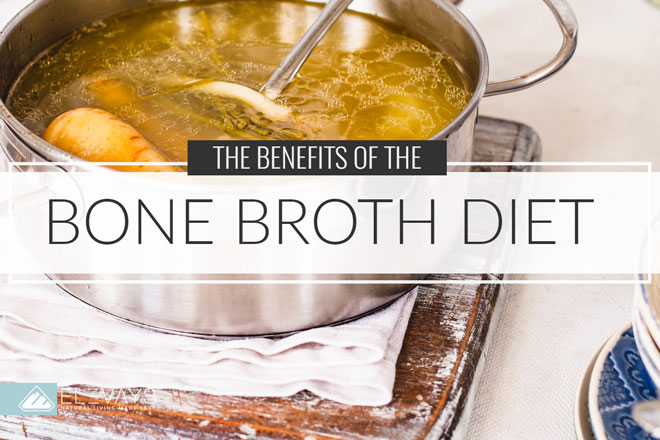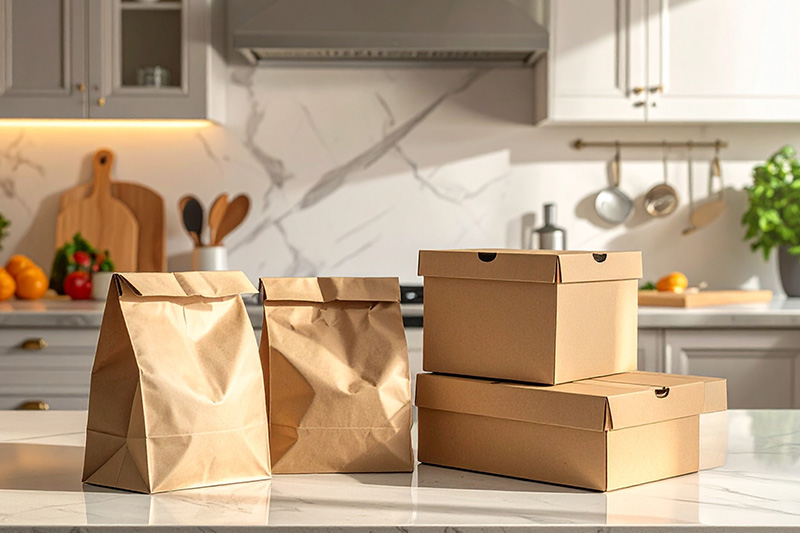 I’m sure older adults throughout your life (probably grandma) have shared old wives’ tales with you about how to get healthy… but you know what wasn’t an old wives’ tale? Chicken soup. Maybe granny didn’t know exactly why a bone broth diet during a cold made you feel better, but she certainly knew it worked.
I’m sure older adults throughout your life (probably grandma) have shared old wives’ tales with you about how to get healthy… but you know what wasn’t an old wives’ tale? Chicken soup. Maybe granny didn’t know exactly why a bone broth diet during a cold made you feel better, but she certainly knew it worked.
Her grandma knew it too. And so did hers. In fact, research has found evidence of soup being used all the way back to 20,000 BC. That’s because, traditionally, all parts of the animal were consumed. Since we cannot eat bones the way we can eat a chicken breast, humans started creating a bone broth to absorb their unique set of nutrients.
But all of that goodness that does such a great job of making us feel better when we’re sick can also be a proactive part of our overall health. It’s not only our immune system that gets a helping hand – it’s your brain, skin, bones, muscles – everything.
TRUTH BOMB:
You’re
Already killing it!
If You Were More Consistent With Your Wellness Routine, You’d Be Unstoppable.
A bone broth diet transforms the idea that bone broth is only something you sip on when you’re sick to something you regularly enjoy for optimal full-body health.
And I want to unpack this bone broth diet concept more. What are the holistic benefits of a bone broth diet… where to buy bone broth (hint: don’t buy!)… how to make it… how much to have… and even how to give it to your pet!
Difference Between Stock and Broth
Before we go any further into the bone broth diet, let’s clear up a little common confusion: bone broth vs. stock.
They are similar in many ways – they are both created by simmering parts of the animal. According to The Kitchn, an authority site on classic cooking, broth is “any liquid that has had meat cooked in it.” And stock actually involves simmering the bones.
So, traditionally speaking broth = using meat and stock = using bones. Now to make matters a little more muddy, when we are referencing “bone broth” in the health community (and in the context of this article) as the name suggests, we are always referring to using high quality bones. Even though the use of the word “broth” may suggest otherwise.
And even more specifically we are referring to a long and slow simmer of the bones so that it extracts tons of minerals, enzymes, vitamins and gelatin (hello, gorgeous skin!) to make a very nutrient dense health tonic.
So, all the juicy benefits that we’re going to discuss in this article will be MISSING if you’re using stock instead of bone broth as we describe it here in this article.
What Are the Benefits of A Bone Broth Diet?
Short answer: a whole lot…and then some.
Longer answer: When you simmer animal bones (and ligaments!), all sorts of good for you compounds come out, like:
- Collagen
- Gelatin
- Glutamine
- Proline
- Glycine
- Glycosaminoglycans (GAGs)
- Calcium
- Copper
- Iron
- Magnesium
- Phosphorus
- Manganese
- Sodium
- Potassium
- Zinc
Make sure to really read through this list now because I’m going to talk about these compounds specifically in our bone broth diet benefits below!
10 Benefits of Bone Broth
Clearly, that list of amino acids, minerals, and proteins is the optimal combo for fabulous health. But what does that mean for each of us practically?
I’m going to clue you in – all of this stuff I’m about to mention is exactly why a bone broth diet is so valuable. It’s not just about just curing the sniffles (though that is definitely a major bonus!); it’s about proactively keeping all areas of our body healthy… naturally.
There are some very specific health concerns that can be addressed by adding bone broth to your life. Here are 10 of the top benefits that a bone broth diet can provide you:
-
Strengthen Immune System
Let’s begin with the #1 reason we consume bone broth: to boost our immunity and knock out any illness. Fact or fiction? Definitely fact. It’s a multipronged effect:
- Lower inflammation: An in vitro study (the kind in a petri dish) showed how chicken soup can act as an anti-inflammatory and lower sickness symptoms
- Produce antioxidant power: Proline behaves as an antioxidant in the body and glycine lowers all that oxidative stress
- Boost essential minerals and amino acids: Instead of swallowing a multi-vitamin, you’re sipping a “multi-mineral” and “multi-amino-acid” – in natural form. We love multivitamins but we love nutrient dense foods even more. Bone broth is the ultimate in nutrient density.
-
Boost Gut Health
In all honesty, this benefit is directly tied in with benefit #1. That’s because most of your immune system is actually in your gut. They go hand in hand.
A bone broth diet IS a gut healing diet.
Bone broth is very calming and nourishing to a sick or leaky gut. Not only are many of the amino acids and minerals of bone broth anti-inflammatory in nature, but they can also help manage the mucus in your gut that protects your intestines and balances your gut microbiome.
This means bone broth paves the way for healthy, good gut bacteria – which is exactly what you need for everything else in your body to be healthy.
-
Improve Digestion
I know we just talked about the overall gut, but I want to break down some of the ways bone broth can improve your digestive tract because digestive issues plague so many clients we see in our consultancy.
- The glycine helps your body properly digest food by stimulating stomach acid
- The gelatin can make your gut motility better, improve your bowel movements, and aid those with food allergies or sensitivities (these are becoming more and more common)
- The collagen can lower your risk of inflammatory bowel disease by protecting that gut lining
A bone broth diet is essential for people with conditions like Crohn’s, Celiac, or acid reflux.
-
Get Better Skin
Many people already know that collagen is the miracle ingredient that helps skin stay young and firm. That’s why you find it listed in so many skin care products. But studies are showing that internal consumption of collagen can improve skin elasticity as well.
Bye-bye fine lines and sag – hello anti-aging and glowing skin!
And it goes further than beauty. Collagen can help you heal wounds and regenerate tissue more quickly. Plus, the gelatin can reduce UV damage.
-
Regulate Blood Sugar
When I talk about regulating blood sugar, your brain may go straight to diabetics only. But every single person needs to regulate their blood sugar for optimal health and wellness. Many issues we face daily from fatigue to hormonal imbalance are affected by glucose and insulin.
Bone broth’s amino acid glycine can help the body regulate the liver’s production of glucose as well as combat symptoms of too much fructose. That makes it an excellent blood sugar regulator.
-
Improve Cardiovascular Health
Another essential benefit of a bone broth diet is heart health.
Researchers have seen that glycine may reduce the size of a heart attack. Plus, this amino acid balances something called methionine. When you have too much methionine in your system, your chance of heart disease goes up (as well as lots of other problems like stroke and mental illness!)
-
Build Those Muscles
Animal products in general are associated with stronger muscles… and bone broth is no different!
- Compounds in the bone broth can help your body better send oxygen throughout your blood and muscle tissue.
- Glycine boosts creatine. To clue any non-bodybuilder in, many people supplement creatine to support muscle building. Don’t think of it as a steroid that will artificially pump you up; it’s a natural supplement that helps your body better build muscle.
- Proline can improve something called “muscle protein synthesis” – which just means exercise creates itty-bitty tears in your muscles and your body repairs those tears, making the muscle both bigger and stronger in the process.
-
Aid Bone and Joint Health
I’m sure it comes as no surprise that a bone broth diet is an ideal way for you to have healthy bones too. Just about everything your bones need can be found in that lovely bowl of broth – from calcium and magnesium to collagen.
But it also supports the joints by lubricating them with GAGs and reducing joint pain with collagen.
-
Enhance Eye Health
In pursuit of overall health, we normally focus on the “biggies” like gut, heart, lungs, skin, etc. But our eyes are so immensely important. We can’t forget about them!
The amino acids in bone broth can do all sorts of things like stimulate eye cells, delay cataract progression, and even improve the retina.
-
Create A Good Mood
Any time I can do something completely natural and healthy to help manage stress and mood, I’m all in. Glycine has been shown to help you destress by lowering your levels of anxiety and calming the mind (plus, it can help with sleep – and let’s face it, adequate sleep is a necessary antidote against anxiety and depression!)
These same compounds can even boost your memory and sharpen your mental state.
How To Make Your Own Bone Broth
I’m sure you’re convinced at this point that a bone broth diet is the way to go. And your next question is: where to buy bone broth? You may walk through the aisles of a health food store, see pre-made and even powdered bone broth, and think that’s the easy way out.
Let me be clear: Store bought bone broth is ALWAYS inferior to making it from scratch. That doesn’t mean it’s terrible for you. It means, take the time to make the real stuff for the real benefits.
The challenge that I’ve noticed with most store bought broth is a few things:
-
Sketchy Ingredients
Most bone broth (even in health food stores) can contain some pretty junky ingredients. Some companies do a lot of “doctoring” to get the right flavor combination and I’m not a fan of long lists of preservatives in my food.
-
Lacks the Nutrient Density
Bone broth that is store bought cannot compare in nutrient quality to what you can make at home on your own. You’ll notice this because when you make a good batch of broth – especially beef broth – there’s a nice layer of healthy fat that floats to the top. This is where many of the healthy fats and nutrients lie. You just don’t get that in store bought broth.
-
The Flavor
I have never tasted a store bought broth that even comes close to homemade broth when it comes to taste and flavor – especially when used in recipes like soups and stews. There’s just no comparison.
-
Quality Bones
Usually you can find organic broth in stores but it’s very hard to find broth that’s made from grass fed cows. This is a big deal because the fatty acid composition is affected by the cow’s diet. The fat composition of a grass fed cow is much better than one raised on grains – not to mention that grass is the natural diet of cows. So those that eat a grass-fed diet are healthier and these health benefits translate to their bones and to you.

4 Mistakes to Avoid When Making Homemade Bone Broth
If you’re intimidated about making your own bone broth, don’t be! It’s really a simple process and I detail all the steps in a video below. But first, I want you to realize that there are 4 Mistakes to Be Sure to Avoid when making bone broth. We show you what to do (and what not to do) to make a healthful and healing batch of bone broth instead of a toxic brew:
How to Make Bone Broth
Now that you know what NOT to do when making bone broth, it’s time to go over the steps on how to make it. And it’s really simple. I’ve actually put together a video for you below.
For the written recipe on how to make bone broth click here.
Our Preferred Method
Using the Vita Clay Organic Cooker to Make Bone Broth
If the entire difference between bone broth and stock is length of time, that automatically means bone broth takes a while. And I’ve made it that way, but you may not want to babysit your stove for an entire day. I love using our Vita Clay to make bone broth. Here are the reasons why:
- It’s made from organic, unglazed clay which is super important. There’s no lead, non-stick chemicals or heavy metals contaminating my food.
- It decreases cooking time without pressure cooking or heating to really high temperatures. I love our Instant Pot pressure cooker, but in the case of bone broth too much high heat can decrease nutrient density. I’ve found that the Vita Clay heats to the perfect temperature to reduce cooking time without compromising health benefits.
- Clay is alkalizing – since the body functions best in an alkaline state I love that the Vita Clay supports that.
- The Vita Clay activates the enzymes and minerals in the food to improve nutrient absorption and digestibility – exactly what we want with bone broth!
- No babysitting the stove top – really, I have no time to babysit a simmering pot of bone broth and I love that with the Vita Clay I can “set it and forget it.”
- It’s also a slow cooker, yogurt maker (hello probiotics!), steamer and more all in one!
This is my go-to device for making bone broth and I can do it in the Vita Clay in just a few hours.
Where To Buy Bones For Bone Broth
Listen up. This next part is extremely important.
In order to soak up all those glorious bone broth diet benefits, you need to source the bones from quality sources. Be picky.
Ideally, you should be choosing bones from:
- Organic and grass-fed beef
- Organic or at minimum hormone free and antibiotic free poultry
The logic here is fairly simple – you want the bone broth from a healthy animal, not a sick animal.
You can get these types of bones from a local butcher or farmer’s market. You can even get them from online markets. But my favorite thing to do is save the bones I have used when roasting a chicken (or a holiday turkey!). Just freeze them until you’re ready.
If you’re in a pinch or you absolutely must buy instead of make bone broth, this is the brand that we recommend. You can order it to your front door, it tastes great and it’s the best “store-bought” brand that we’ve found.
How To Use Bone Broth For The Bone Broth Diet
If you’ve decided to use bone broth regularly for all the health benefits – just how much should you drink?
- When you’re actively sick – you can feel free to sip on it throughout the whole day.
- When you’re well – you can still drink bone broth each day. Most people suggest anywhere between 8 ounces to a few cups.
But what about a bone broth cleanse? Should you essentially fast with bone broth?
Some people do a use bone broth for weight loss or a detox and eat very little whole foods while consuming mostly bone broth. We’ve done a bone broth cleanse before and there are definitely powerful benefits, but the best way to use bone broth is to simply make it a part of your routine. Like a snack. Or pre-meal dish.
How To Store Bone Broth
If you are embarking on a bone broth diet and reaping its benefits regularly – you need to figure out how to store bone broth. It boils down to two options:
- How long does bone broth last in the fridge: I store my broth in large mason jars and find that it keeps just fine for several days (even a couple of weeks) without issue.
- How long does bone broth last in the freezer: One year (Some people like to keep it in ice cube trays for convenient de-thawing)
If you don’t think you will consume all your bone broth in a few days – freeze at least half of it. I typically make a plan to use it in stews or soups or even using it in place of water when making rice or quinoa – I’ve even added a splash to spaghetti sauce. You don’t want all that goodness to go down the drain.
Bone Broth Protein Powder
We already know that bone broth is a great source of protein and an excellent choice for building and repairing muscles. Plus, around 30% of the protein in your body right now is made up of collagen (and we know bone broth is a killer source!)
So it should come as no surprise that you can actually find bone broth protein powder.
I love this organic and gluten-free bone broth protein powder with 20 grams of protein and 25.4 grams of their organic bone broth blend (made from organic chicken) in each serving It comes in both sweet and savory flavors – so I can mix it up. This is great to add to a morning smoothie.
Is that powdered bone broth blend as potent as homemade bone broth? No! But it is still packed with necessary nutrition – so I love making it a part of my bone broth diet. This is our favorite bone broth protein.
Pet Bonus: Bone Broth For Dogs?
Before we wrap up our discussion on the bone broth diet, let’s take a pit stop at our four-legged friends. After all, they are a part of the family too! Will a bone broth diet help them in any way?
Bone broth for dogs gives them all the same benefits it gives you – from a healthy gut and joint support to relief when they’re sick (often this comes with digestive issues like diarrhea).
Just pour a few spoonfuls over their dinner (for general purposes) or let them sip it plain when they are sick. But don’t give them bones. I know, dogs and bones go hand in hand. But they are too soft after all that simmering. Just throw them out.
Benefiting From The Bone Broth Diet
So the bone broth diet can help out just about every part of your body – it’s the perfect addition to a holistic wellness lifestyle. Healing up that leaky gut and boosting your immunity are essential pieces of the health puzzle – all the extra added benefits are icing on the cake.
Have you ever tried bone broth? How do you like to eat it? How did it make you feel? Tell me all about your experience in the comments below!
If you want the same benefits of bone broth—without the bone broth
As you’ve learned, bone broth’s benefits are owed to collagen. If you don’t like the taste of bone broth, a collagen peptides supplement may be better for you. Our Beauty Collagen Complex has a Vanilla Honey flavor and is amazing for gut, skin, hair, nails, joints, and more!
To check out our other supplements including our Organic Immunity Greens and Hydration Superfood Energy, go here!

Sources:
- Axe, J. (2017). Bone Broth Benefits for Digestion, Arthritis and Cellulite. Retrieved from: https://draxe.com/the-healing-power-of-bone-broth-for-digestion-arthritis-and-cellulite/
- Axe, J. (2017). 7 Benefits of a Bone Broth Fast: Stronger Gut, Skin + More. Retrieved from: https://draxe.com/bone-broth-fast/
- Wu, X., Zhang, C., Goldberg, P., Cohen, D., Pan, Y., Arpin, T., & Bar-Yosef, O. (2012). Early pottery at 20,000 years ago in Xianrendong Cave, China. Science, 336(6089), 1696-1700.
- Sarko, J. (2005). Bone and mineral metabolism. Emergency Medicine Clinics, 23(3), 703-721.
- Kresser, C. (2017). The Bountiful Benefits of Bone Broth: a Comprehensive Guide. Retrieved from: https://chriskresser.com/the-bountiful-benefits-of-bone-broth-a-comprehensive-guide/
- Nadkarni, G. B., Friedmann, B., & Weinhouse, S. (1960). Gluconeogenesis from glycine and serine in the rat. Journal of Biological Chemistry, 235, 420-425.
- McCarty, M. F., & DiNicolantonio, J. J. (2014). The cardiometabolic benefits of glycine: Is glycine an ‘antidote’to dietary fructose?.
- Horwitz, L. D., Fennessey, P. V., Shikes, R. H., & Kong, Y. (1994). Marked reduction in myocardial infarct size due to prolonged infusion of an antioxidant during reperfusion. Circulation, 89(4), 1792-1801.
- Shemin, D., & Eittenberg, D. (1946). The biological utilization of glycine for the synthesis of the protoporphyrin of hemoglobin. Journal of Biological Chemistry, 166, 621-625.
- Leuzzi, V., Alessandrì, M. G., Casarano, M., Battini, R., & Cioni, G. (2008). Arginine and glycine stimulate creatine synthesis in creatine transporter 1-deficient lymphoblasts. Analytical biochemistry, 375(1), 153-155.
- Meister, A. (Ed.). (2009). Advances in enzymology and related areas of molecular biology (Vol. 54). John Wiley & Sons.
- Kasai, K., Kobayashi, M., & Shimoda, S. I. (1978). Stimulatory effect of glycine on human growth hormone secretion. Metabolism, 27(2), 201-208.
- Gomes, J. A. P., Amankwah, R., Powell-Richards, A., & Dua, H. S. (2004). Sodium hyaluronate (hyaluronic acid) promotes migration of human corneal epithelial cells in vitro. British journal of ophthalmology, 88(6), 821-825.
- Brittis, P. A., Canning, D. R., & Silver, J. (1992). Chondroitin sulfate as a regulator of neuronal patterning in the retina. Science, 255(5045), 733.
- Bahmani, F., Bathaie, S. Z., Aldavood, S. J., & Ghahghaei, A. (2012). Glycine therapy inhibits the progression of cataract in streptozotocin-induced diabetic rats. Molecular vision, 18, 439
- Clark, K. L., Sebastianelli, W., Flechsenhar, K. R., Aukermann, D. F., Meza, F., Millard, R. L., & Albert, A. (2008). 24-Week study on the use of collagen hydrolysate as a dietary supplement in athletes with activity-related joint pain. Current medical research and opinion, 24(5), 1485-1496.
- Proksch, E., Segger, D., Degwert, J., Schunck, M., Zague, V., & Oesser, S. (2014). Oral supplementation of specific collagen peptides has beneficial effects on human skin physiology: a double-blind, placebo-controlled study. Skin pharmacology and physiology, 27(1), 47-55.
- Cen, L., Liu, W., Cui, L., Zhang, W., & Cao, Y. (2008). Collagen tissue engineering: development of novel biomaterials and applications. Pediatric research, 63(5), 492-496.
- Hou, H., Li, B., Zhao, X., Zhuang, Y., Ren, G., Yan, M., … & Chen, L. (2009). The effect of pacific cod (Gadus macrocephalus) skin gelatin polypeptides on UV radiation-induced skin photoaging in ICR mice. Food chemistry, 115(3), 945-950.
- Liao, X. H., Majithia, A., Huang, X., & Kimmel, A. R. (2008). Growth control via TOR kinase signaling, an intracellular sensor of amino acid and energy availability, with crosstalk potential to proline metabolism. Amino acids, 35(4), 761-770.
- Koutroubakis, I. E., Petinaki, E., Dimoulios, P., Vardas, E., Roussomoustakaki, M., Maniatis, A. N., & Kouroumalis, E. A. (2003). Serum laminin and collagen IV in inflammatory bowel disease. Journal of clinical pathology, 56(11), 817-820.
- Moody, F. G., & Durbin, R. P. (1965). Effects of glycine and other instillates on concentration of gastric acid. American Journal of Physiology–Legacy Content, 209(1), 122-126. Di Lullo, G. A., Sweeney, S. M., Körkkö, J., Ala-Kokko, L., & San Antonio, J. D. (2002). Mapping the ligand-binding sites and disease-associated mutations on the most abundant protein in the human, type I collagen. Journal of Biological Chemistry, 277(6), 4223-4231.
- Nadkarni, G. B., Friedmann, B., & Weinhouse, S. (1960). Gluconeogenesis from glycine and serine in the rat. Journal of Biological Chemistry, 235, 420-425.
- Peng, H. Y., Man, C. F., Xu, J., & Fan, Y. (2015). Elevated homocysteine levels and risk of cardiovascular and all-cause mortality: a meta-analysis of prospective studies. Journal of Zhejiang University. Science. B, 16(1), 78.
- Goldberg, Elyssa. (2017). Wait a Second, Are Bone Broth and Stock the Same Thing? Bon Appetite. https://www.bonappetit.com/story/difference-between-bone-broth-and-stock
- How To Store Bone Broth. Nom Nom Paleo. http://nomnompaleo.com/post/98290360103/how-to-store-bone-brot
- Scott, Dana. Bone Broth For Dogs? Here’s Why It’s A Great Idea. Dogs Naturally. http://www.dogsnaturallymagazine.com/reasons-your-dog-love-bone-broth/
- McNew, Aimee. (2016). The Recommended Guide on How To Drink Bone Broth. The Kettle & Fire Blog. https://blog.kettleandfire.com/how-to-drink-bone-broth/
- Instant Pot (Pressure Cooker) Bone Broth. Nom Nom Paleo. http://nomnompaleo.com/2012/01/17/20120117quick-pressure-cooker-bone-broth









Why only 4 hours of cooking in the Vita clay organic cooker? I cook my broth for 48 hours in a slow cooker. Is the Vita cooker faster?
Hi Maria!
Yes, the Vita Clay cooks things much faster 🙂
HI! Just trying to learn as much as I possibly can!
I hear that ceramic pots/slow cookers actually give out a lot of led into the food. Is this true? Anywhere I can learn more about all this? I know there is a toxic layer in many different pots and pans, just trying to learn for the future. Thank you for the info! <3 <3 <3
Hi Tiara! Yes, ceramic pots and slow cookers give off a lot of lead, but it has more to do with the glaze that the ceramics are coated with. That non-stick glaze on the inside of a lot of crock pots is one of the primary culprits for leaching lead into the food. One reason why we love using stainless steel (and the Instant Pot) and the Vita Clay is because these are free of any contaminants, including lead. They are safe to cook with so that you don’t have to worry about any impurities getting into your food. As for resources, we’ve written a few articles on the topic https://elevays.com/10-common-kitchen-toxins-everyone-avoid-part-1/ and https://elevays.com/10-common-kitchen-toxins-everyone-avoid-part-2/ to help you get started in learning about all of this!
Hello,
I would like to know if the clay interior pot on the toxic free slow cooker can be placed in the oven to pre-roast the bones and veggies?
Thank you.
Hi Kakki! The interior clay pot is not oven safe and will crack in the dry environment. We recommend pre-roasting in a glass roasting pan and then transferring your bones and veggies to the VitaClay.
I’m curious as to the litre capacity of your Vita Clay Organic cooker?
Thank you!
Ours is 4.5 Liters
Very hard to find what is true about bone broth. Recently there are claims that collagen does not go into the body and build cartilage or skin, but is simply digested as a protein. Worse, there are sources that claim that bone absorb heavy metals which goes into the broth – even when organic and grassfed. I would love to see a debunking of the negative. It is new information, so the pro bone broth have not yet responded to the nay sayers.
Interesting! Please share where you saw this information. I’d love to take a look at it.
I can search again, but you can also do so yourself. Write in google, “the danger of bone broth” and on youtube too. And then write another search “Lead in bone broth” and you will find many sources.
I already replied. What doesn’t it show? Anyway, Instead of me going back to these searches, you can simply write in google things like “the danger of bone broth” and “lead in bone broth” or other such phrases and see what you get. Youtube too.
I have a question!…. Is there anything I can use all the scrap bones and veggies for?
Hi Crystal! The scrap bones and veggies are pretty depleted after you make bone broth. They don’t really have any flavor (or much nutritional value) because of the delicious goodness has gone into the broth! I haven’t seen a good nutritional use of the scraps, but if you’re interested in an environmentally friendly option, I would look into composting.